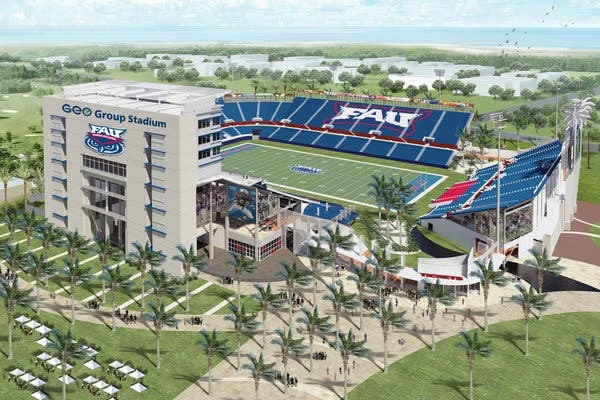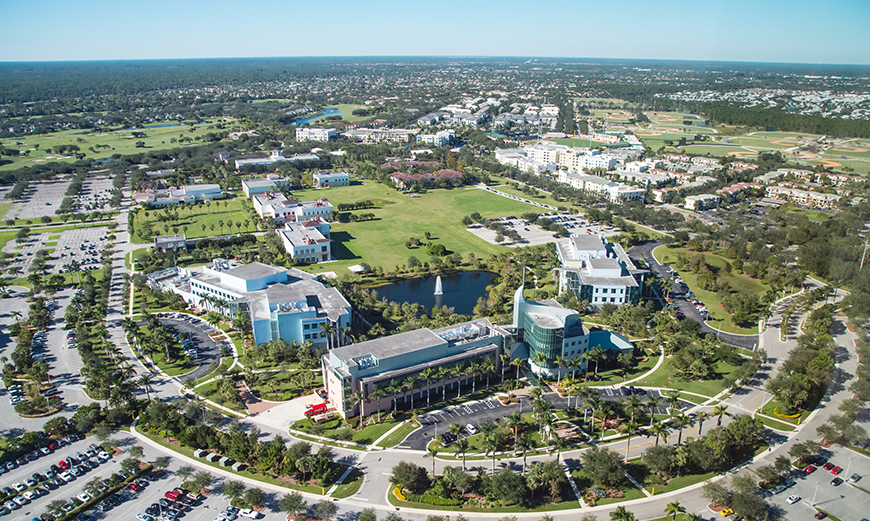Florida Atlantic University: A Rising Public Research Institution in Florida
Introduction
Florida Atlantic University (FAU) is one of Florida’s fastest-growing public research universities, known for its diverse student body, expanding research footprint, and strong value for both in-state and out-of-state students. Located in the vibrant coastal city of Boca Raton with multiple campuses across Southeast Florida, FAU has been steadily climbing in the national rankings and drawing recognition for its academic programs, affordability, and inclusive environment. This blog takes a closer look at FAU’s history, reputation, admissions, student life, academics, facilities, and more.
History and Overview
Founded in 1961 and officially opened in 1964, FAU was the first public university established in Southeast Florida. The main campus was built on the site of a former World War II army airfield in Boca Raton, and it has since grown into a sprawling institution serving more than 30,000 students. Today, FAU operates six campuses along Florida’s southeast coast, including Boca Raton, Jupiter, Davie, Dania Beach, Fort Lauderdale, and Fort Pierce.
As part of Florida’s State University System, FAU was originally intended to serve commuter students, but over the decades it has evolved into a full residential and research university with strong ties to the local community and global academic networks.
Rankings and Reputation
In recent years, Florida Atlantic University has steadily improved its position in national rankings. In the 2025 U.S. News & World Report rankings, FAU was placed at No. 103 among public universities and No. 189 among all national universities. This upward trajectory reflects the institution’s emphasis on student success, expanded research output, and enhanced academic programs.
FAU is also recognized for its diversity, ranking among the most ethnically and culturally diverse institutions in Florida. It has earned praise for its role in advancing social mobility and for providing quality education at a relatively affordable cost.
Student Population and Diversity
FAU enrolls approximately 30,000–31,000 students across undergraduate, graduate, and professional programs. Of these, nearly 24,000 are undergraduates, with the remainder pursuing master’s, doctoral, and professional degrees. The university is proud to host students from more than 100 different countries, making it a welcoming environment for international applicants. Around 2,000–2,500 international students are enrolled, creating a vibrant multicultural atmosphere.
Diversity is one of FAU’s defining features. It has one of the highest proportions of minority students among Florida’s public universities, and it emphasizes inclusivity in both academics and student life.
Admissions, Test Scores, and Selectivity
Florida Atlantic University is considered moderately selective, with an acceptance rate between 66% and 73%. The middle 50% of admitted students typically score between 1040 and 1210 on the SAT or between 21 and 26 on the ACT.
While FAU is test-optional for many applicants, students who submit standardized scores that meet or exceed the minimum thresholds for math, reading, and English are considered more competitive. In addition to academic performance, the admissions process values extracurricular involvement, community engagement, and leadership potential.
FAU’s application deadline for fall entry is typically in mid-March, though there are also admission windows for spring and summer terms. Applicants can apply through the Common Application or the university’s own portal.
Tuition and Costs
One of FAU’s major strengths is affordability, particularly for Florida residents. Annual in-state tuition and fees are approximately $4,900, making it one of the more cost-effective options among public universities. Out-of-state students, however, face tuition and fees around $17,300 per year.
When adding housing, food, books, and other living costs, the estimated total annual cost of attendance for in-state students is about $22,000–$25,000, while out-of-state students may face closer to $30,000–$32,000. Despite these costs, FAU continues to rank as one of the best value institutions in the country, particularly when factoring in scholarships and financial aid.
Faculty and Student Ratio
The student-to-faculty ratio at FAU is approximately 20:1. This ratio is higher than at many smaller liberal arts colleges but typical for a public university of its size. Many lower-division courses have larger lecture formats, while upper-division and graduate courses are smaller and allow for closer interaction with professors. With more than 1,000 faculty members, students have access to a broad range of expertise across disciplines.
Popular Majors and Academic Programs
Florida Atlantic University offers more than 170 degree programs across 10 colleges. The most popular undergraduate majors include:
-
Biological Sciences
-
Nursing
-
Business Administration and Accounting
-
Psychology
-
Criminal Justice
-
Liberal Arts and Humanities
-
Communication Studies
At the graduate level, business administration, education, and biomedical sciences are especially strong. FAU’s College of Engineering and Computer Science and the Charles E. Schmidt College of Medicine also draw significant interest from students aiming for careers in high-demand fields.
Research Strengths and Insights
FAU is classified as an R1: Very High Research Activity institution by the Carnegie Classification, placing it among the top research universities in the country. In the 2023–24 fiscal year, the university secured nearly $76 million in research funding.
FAU’s research strengths include marine science, ocean engineering, environmental science, neuroscience, and biomedical technology. The SeaTech campus in Dania Beach specializes in ocean engineering and is one of the few research centers in the U.S. dedicated to this field. Other initiatives focus on climate change, renewable energy, and health equity, making FAU a forward-looking institution tackling global challenges.
Endowment and Financial Resources
FAU’s financial stability is supported by an endowment valued at approximately $285 million, along with an annual operating budget exceeding $1.2 billion. While its endowment is smaller than that of older or more prestigious universities, FAU’s prudent financial management and strong state funding ensure continued growth in facilities, faculty hiring, and research development.
Campus, Facilities, and Location
The main campus in Boca Raton covers 850 acres and includes modern academic buildings, residence halls, athletic complexes, a performing arts center, and even a nature preserve that is home to burrowing owls—the school’s mascot. FAU Stadium, which seats over 30,000, is a centerpiece of the campus and the site of spirited NCAA Division I athletics.
Beyond Boca Raton, the university’s regional campuses provide specialized opportunities. The Jupiter campus focuses on research and honors programs, including partnerships with the Max Planck Florida Institute for Neuroscience and Scripps Research. The SeaTech campus near Fort Lauderdale emphasizes marine and ocean engineering. Together, these campuses create a wide range of opportunities for students across disciplines.
Admissions Deadlines
For first-year students applying for fall entry, the priority application deadline is generally in mid-March. Transfer students and international students may have slightly different deadlines, particularly if applying for spring or summer terms. Students are encouraged to apply early to maximize scholarship consideration.
Famous Alumni
FAU has produced graduates who have made an impact in various fields:
-
Carrot Top (Scott Thompson): Comedian and actor.
-
Alfred Morris: Former NFL running back for the Washington Redskins and Dallas Cowboys.
-
Marc Bell: Technology entrepreneur and investor.
-
Michael McDonald: Emmy-winning comedian, actor, and writer.
-
Annette Taddeo: Florida state senator and political leader.
These examples highlight the breadth of careers FAU alumni pursue, from politics and entertainment to athletics and business.
Student Life
With over 400 clubs and organizations, FAU provides ample opportunities for students to connect outside the classroom. Greek life, cultural clubs, student media, and professional organizations all enrich the student experience. FAU’s athletic teams, known as the Owls, compete in NCAA Division I and are a source of school pride.
Conclusion
Florida Atlantic University has transformed from a small commuter school into a nationally recognized public research institution. With a growing reputation, competitive academics, diverse student body, and expanding research initiatives, FAU offers a compelling option for students seeking both affordability and opportunity. Its location in South Florida provides additional advantages—proximity to beaches, cultural hubs, and business centers—making FAU an attractive choice for both domestic and international students.
As it continues to rise in rankings and reputation, Florida Atlantic University is solidifying its place among the leading public universities in the United States.




